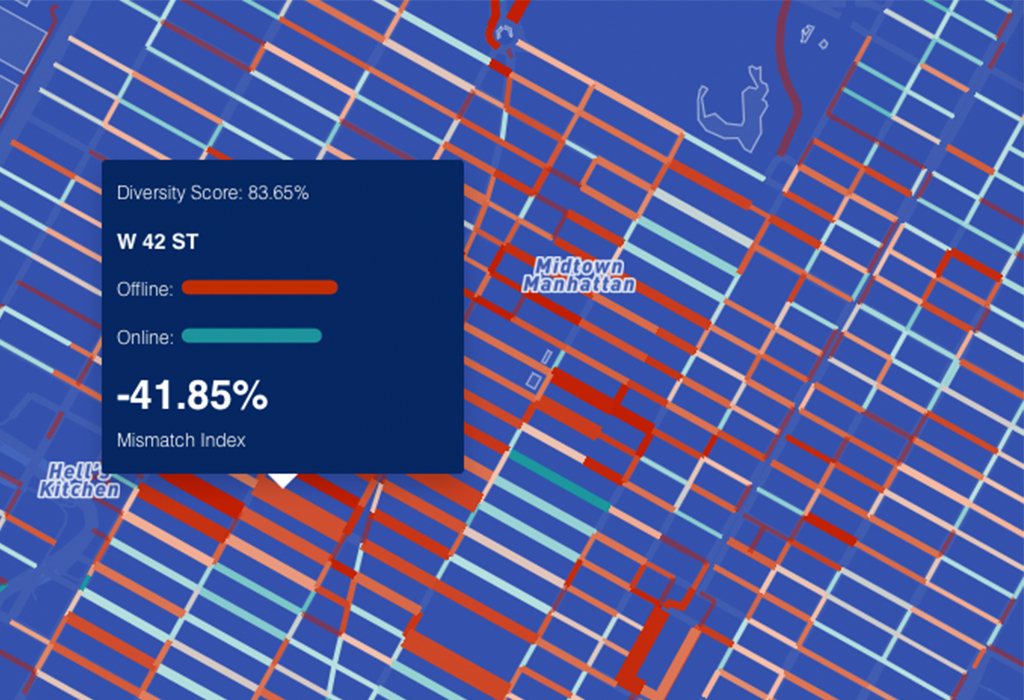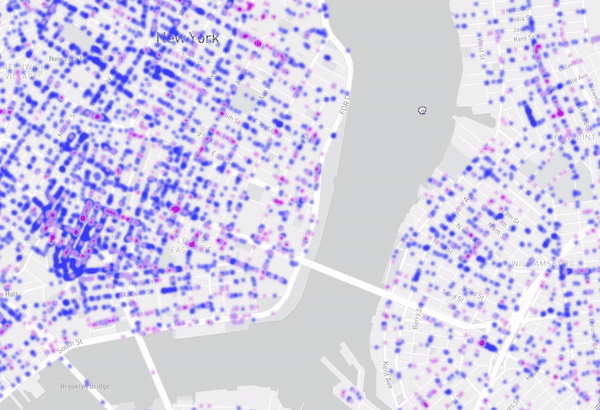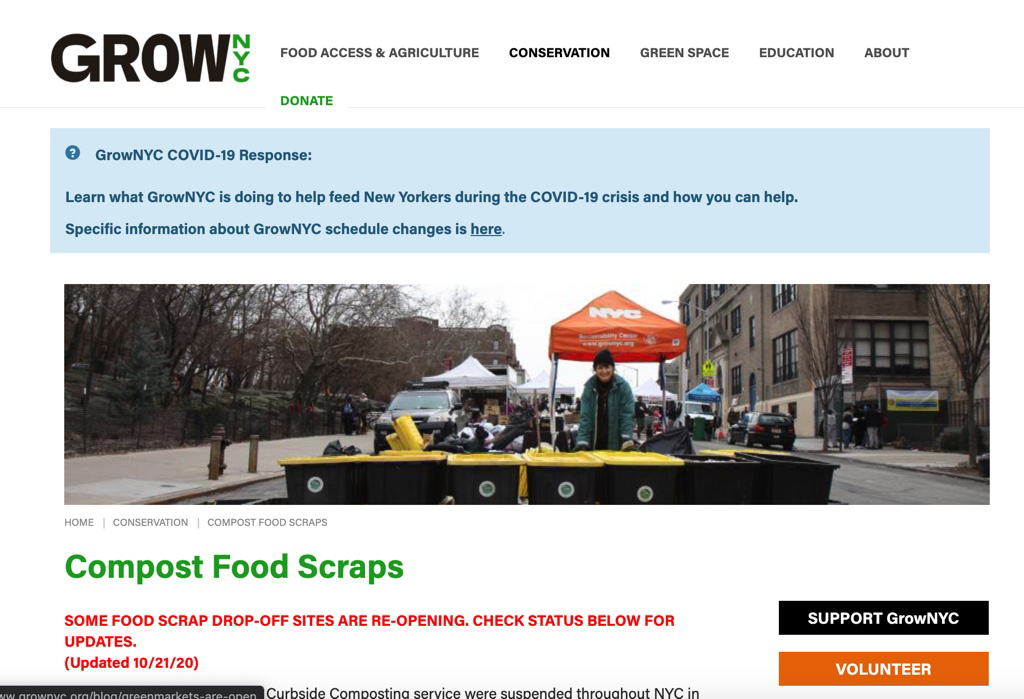Evolving Public Realm
In New York City, where residents are often pushed together in cramped apartments or on crowded streets, having a third space to go to—somewhere that isn’t work or home—is crucial. For many people, public spaces such as parks, libraries, or even open streets serve that purpose.
But with the city facing “the worst economic crisis since the Great Depression,”1 according to Mayor Bill de Blasio’s administration, its ability to maintain these important spaces is threatened.
The adopted budget for Fiscal Year 2021, which went into effect on July 1, 2020, includes cuts to many of the city’s essential services, including the NYC Department of Education2 and its budget for affordable housing3. The NYC Department of Parks and Recreation was also hit particularly hard, with its already slender budget cut by 14 percent. The effects of this are already being felt across the five boroughs: more people are using city parks during the pandemic, but they’re not being maintained as frequently, leading to unkempt spaces that are strewn with litter4.
The trash problem also extends to another public space: streets and sidewalks, which have become noticeably grimier thanks to cuts to the NYC Department of Sanitation. The department lost $106 million in the FY2021 budget5, leading to a reduction in street cleaning services and trash collection days throughout the city6, as well as cuts to the composting program7, which only recently began operating again at select sites.
The city has also made attempts in recent years to improve pedestrian access to public space, and reduce the number of cars on the road. In 2008, the NYC Department of Transportation (DOT) launched Summer Streets8, which turned seven miles of Manhattan into a car-free oasis. Beginning in 2017, DOT also created more permanent interventions known as shared streets, which allow pedestrians, cyclists, and vehicles to safely share roadways; those have so far been implemented in the Flatiron District, Downtown Brooklyn, and near Grand Central Terminal.
But the coronavirus pandemic exposed how inadequate these programs were for giving New Yorkers much-needed open space. In May, Mayor Bill de Blasio’s administration launched an Open Streets program with the goal of eventually closing 100 miles of roadway to vehicular traffic. But a recent report by the advocacy group Transportation Alternatives9 calls the program “disconnected and limited,” noting that many of the open streets are too short, improperly enforced, and placed in areas where there may not be an actual need for more open space.
As New York remains in the midst of a pandemic that requires people to stay distanced from one another, the public realm has become more important than ever. Those wishing to represent New Yorkers after the next election must commit to improving these crucial spaces for the good of the city.
Making Streets Pedestrian-Friendly
This data visualization was created by the Civic Data Design Lab and Cuebiq.
The city has historically been pedestrian-friendly, and interventions like new pedestrian plazas (such as Snøhetta’s Times Square reconstruction10) and protected bike lanes have increased New Yorkers’ access to spaces that were once dominated by cars. In 2014, Mayor Bill de Blasio also implemented Vision Zero11, a plan to reduce pedestrian deaths with the ultimate goal of getting to zero.
But in recent years, its streets and sidewalks have become more crowded as new modes of transportation become more widespread. NYC Department of Transportation commissioner Polly Trottenberg noted in the agency’s 2019 Mobility Report12 that city streets are “more congested than ever,” with a huge uptick in the number of taxis and for-hire vehicles, as well as more home deliveries. Add in an increase in the number of cyclists—28 of whom were killed on city streets in 201913—and you have streets that can feel unwelcome to even the most ardent pedestrian.
 Vist Project Online | Offline Mismatch This student data visualization was created by Maoran Sun, Tianyu Su, Zhuangyuan Fan at the Massachusetts Institute of Technology in the spring semester of 2020.
Vist Project Online | Offline Mismatch This student data visualization was created by Maoran Sun, Tianyu Su, Zhuangyuan Fan at the Massachusetts Institute of Technology in the spring semester of 2020.
Before the coronavirus pandemic, the de Blasio administration was taking steps to address these issues: its Green Wave plan14, announced in 2019, was set to add 80 miles of protected bike lanes to the city by 2021, as well as implement safety programs to address dangerous thoroughfares and injuries caused by car crashes. And that same year, City Council speaker Corey Johnson ushered in a wide-ranging master plan for the city’s streets15, aimed at breaking the city’s car culture and creating a more connected network
Streets are also threatened by the shuttering of retail spaces across the city, largely due to the growing popularity of online shopping and further impacted by COVID-19 restrictions on businesses. The MIT student visualization “Online | Offline Mismatch” explores this issue by comparing retail’s online presence to its physical foot traffic.
But the ways streets have been used since the pandemic began illustrate the greater need for more design improvements that give space back to pedestrians and cyclists rather than prioritizing vehicles. Explore CDDL’s visualization at the top of this section to see how street use was transformed by the pandemic.
Public Transit and Accessibility
Public transit is, in theory, the great equalizer in New York City. On an average weekday—before the coronavirus pandemic, anyway—more than six million people use the city’s subways and buses. For the cost of a MetroCard swipe, city residents can travel from the northernmost reaches of the Bronx to the outermost beaches of Queens, and just about anywhere in between.
 Visit Project Accessible NYC This student data visualization was created by Angelica Door, Patricia Cafferky at the Massachusetts Institute of Technology in the spring semester of 2020.
Visit Project Accessible NYC This student data visualization was created by Angelica Door, Patricia Cafferky at the Massachusetts Institute of Technology in the spring semester of 2020.
But not all New Yorkers have equal access to public transit. While the subway and bus do reach much of the five boroughs, there are neighborhoods that are transit deserts, meaning they’re at least a 15-minute walk from the nearest subway or rail stop16.
For people with disabilities, the accessibility issues are even more dire: while there are 472 subway stations across the city17, only 25 percent of those are considered compliant with the Americans with Disabilities Act (ADA). The Metropolitan Transportation Authority (MTA) has said its goal is to ensure that riders are no more than two stops from an accessible station at any given point, but the agency is currently far from reaching that goal. Moreover, disabled New Yorkers often contend with maintenance issues at accessible subway stations, such as broken elevators or narrow platforms.
Those accessibility issues are worse for New Yorkers who are living in poverty: a study by the Center for Independence of the Disabled, NY found that “in the poorest areas of NYC with the highest population density of people with disability, there are often 3 or more stops in a row that are not accessible.”18
To truly grasp the extent of this problem, scroll through “Project Accessible NYC”, which has mapped out the accessible subway stations throughout the city. You can scroll through to see which stations comply with the ADA and how those stations correlate to certain demographics, such as age and income level. You’ll find that there are quite a few stations near aging populations, such as East Broadway in Manhattan, that are inaccessible—and do not have renovations planned.
References
1. In the Face of an Economic Crisis, Mayor de Blasio Announces Budget that Prioritizes Safety, Police Reform, Youth Services, and Communities of Color, New York City, Office of the Mayor https://www1.nyc.gov/office-of-the-mayor/news/487-20/in-face-an-economic-crisis-mayor-de-blasio-budget-prioritizes-safety-police
2. In financial crisis, NYC cut $707M from its education budget. These programs will feel the effects, Chalkbeat New York https://ny.chalkbeat.org/2020/7/22/21334981/education-budget-cuts-hiring-freeze
3. Affordable Developers Worry about Building More Housing Amid Budget Cuts, Commercial Observer https://commercialobserver.com/2020/07/affordable-developers-worry-about-building-more-housing-amid-budget-cuts/
4. Trash Piles Up in Parks, Just When New Yorkers Need Them the Most, The New York Times https://www.nytimes.com/2020/08/27/nyregion/nyc-parks-trash.html
5. NRDC: NYC FY2021 Budget Cut's Essential Sanitation Services, NRDC https://www.nrdc.org/media/2020/200630-1
6. How the City's Budget Cuts will Impact Sanitation Operations, NY1 https://www.ny1.com/nyc/all-boroughs/news/2020/07/07/dsny-sanitation-budget-cuts-what-to-expect-
7. GrowNYC https://www.grownyc.org/compost
8. About Summer Streets, New York City Department of Transportation https://www1.nyc.gov/html/dot/summerstreets/html/about/about.shtml
9. The Unrealized Potential of New York City's Open Streets, Transportation Alternatives https://www.transalt.org/open-streets-progress-report
10. Times Square, Snohetta https://snohetta.com/projects/327-times-square
11. Vision Zero https://www1.nyc.gov/content/visionzero/pages/
12. NYC Mobility Report, August 2019, New York City Department of Transportation http://www.nyc.gov/html/dot/downloads/pdf/mobility-report-2019-print.pdf
13. Vision Zero Year 6 Report https://www1.nyc.gov/assets/visionzero/downloads/pdf/vision-zero-year-6-report.pdf
14. Vision Zero: Mayor de Blasio Announces "Green Wave" Bicycle Plan to Address Cycling Fatalities -- With Citywide Protected Bike Lane Network and Increased Enforcement, New York City, Office of the Mayor https://www1.nyc.gov/office-of-the-mayor/news/368-19/vision-zero-mayor-de-blasio-green-wave-bicycle-plan-address-cycling-fatalities---/#/0
15. City Council passes $1.7B plan to 'revolutionize' NYC streets, Curbed https://ny.curbed.com/2019/10/30/20940184/city-council-passes-master-street-safety-plan
16. Who's Afraid of a Transit Desert, The New York Times https://www.nytimes.com/2019/10/11/realestate/whos-afraid-of-a-transit-desert.html#:~:text=Despite%20New%20York%20City's%20extensive,nearest%20subway%20or%20rail%20station.
17. Where the Subway Limits New Yorkers With Disabilities, The New York Times https://www.nytimes.com/interactive/2019/02/11/nyregion/nyc-subway-access.html
18. Subway Accessibility Maps, Center for Independence of the Disabled, NY https://www.cidny.org/subway-accessibility-maps/
Additional Resources
See more +
See less –


















